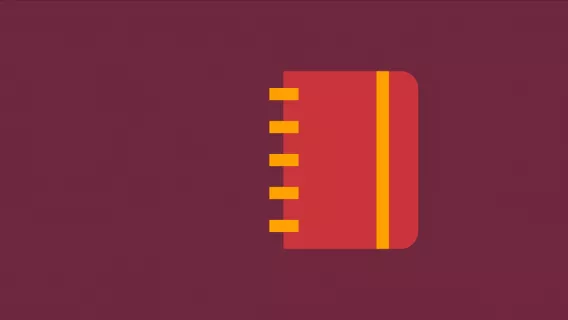This section focuses on how trans and gender diverse young people experiences silences in school curricula. In the first instance, please watch the video about tackling homophobic, biphobic and transphobic bullying.
This section also contains key findings from research, impactful quotes from young people, starting points to think about curricular developments as well as resources for further study. Please navigate through this section and complete the corresponding worksheet in the workbook.
There are absolutely zero talks or information given about gender identity and expression and the differences between them – so virtually most of the people are uninformed on the topic.
(Workshop Participant, Anonymous)

Research
Trans and gender diverse youth explained:
- How gender identity and gender expression were excluded from their school curriculum
- That they were denied information and terminology that was vital to making sense of their gender identity and limited their ability to discuss their experiences with significant others
- That curricular exclusion promoted misunderstanding and contributed to the stigmatisation of trans and gender diverse youth
- That many students turned to trans and gender diverse youth for education about gender identity and gender expression and that this was emotionally draining
International research has found that:
- Only 12.7% of trans and gender diverse had LGBT issues covered by their school curriculum (Greytak et al. 2013).
- Trans and gender diverse youth are often required to explain their identity to others and that this can be a psychological strain (Austin, 2016).
- Providing an LGBTI+ inclusive curriculum improves trans and gender diverse youth’s learning and well-being (Snapp, et al., 2015).
It's very weird, because typically if anyone wants any information, they'll come straight to me, so suddenly I become a teacher for all of it. Which, you know, every once in a while I'm fine with, but literally having to make a mini-classroom to teach people about it does. It gets annoying and frustrating, if only because I just want to be like every other student. I don't want to be the teacher, you know?
(Shane, Age 16)
Ensure that gender identity and gender expression are incorporated across the curriculum. The following are some suggested starting points:
You might find the following resources useful:
- Growing Up LGBT: A Resource for SPHE and RSE (In particular, Junior Cycle lessons 2 and 9, Senior Cycle lessons 1 and 5)
- Agenda: Support Children and Young People in Making Positive Relationships Matter
- Crush: Transforming Relationships and Sexuality Education
- Including LGBT-Content in Sex Education: Four Wrong Ways (and One Right One)
- Principles of Gender Inclusive Puberty and Health Education
You might find the following resources useful:
- Access a Ted Talk on ‘The biology of gender, from DNA to the brain’ by Karissa Sanbonmatsu.
- Access Scientific American article on ‘The New Science of Sex and Gender’.
You might find the following resources useful:
There is potential to include, where possible, books, drama texts and films that have trans and gender diverse characters. You might find the following resources useful:
- The following list of books is taken from two young adults book lists feature in The Guardian, one entitled “Top 10 children’s books by transgender authors featuring trans characters” and another entitled “Top 10 books about gender identity”.
- One in Every Crowd by Ivan Coyote
- A+E 4ever by L Merey
- First Spring Grass Fire by Rae Spoon
- The Unintentional Time Traveller by Everett Maroon
- Hello Cruel World by Kate Bornstein
- Lizard Radio by Pat Schmatz
- Roving Pack by Sassafras Lowrey
- I Know Very Well How I Got my Name by Elliott DeLine
- George by Alex Gino
- If I was Your Girl by Meredith Russo
- Luna by Julie Anne Peters
- For Today I am a Boy by Kim Fu
- Beautiful Music for Ugly Children by Kirstin Cronn-Mills
- Golden Boy by Abigail Tarttelin
- Annabel by Kathleen Winter
- Every Day by David Levithan
- Beauty Queens by Libby Bray
- Beyond Magenta: Transgender Teens Speak Out by Susan Kuklin
- Sacred Country by Rose Tremain
- All this Happened, More or Less by Jayne A. Quan
- Films
- Tomboy (2011), Age Rating: 15
- Three Generations (2015), Age Rating: 12
- The Danish Girl (2015), Age Rating: 15
You might find the following resources useful:
You might find the following resources useful:
You might find the following resources useful:
There is potential to draw on the many videos, research findings and resource packs referenced in each section of this e-resource to discuss the experiences of trans and gender diverse youth as a social justice and human rights issue. You might also find the following resources useful:
- Learn about Transgender Day of Remembrance (TDOR)
You might find the following resources useful:
You might find the following resources useful:
You might find the following resources useful:
You might find the following resources useful:
- P27-28 of Creating an LGBT-inclusive curriculum A Guide for Secondary Schools
- Please also return to Section 6 of this e-resource ‘Sports’
You might find the following resources useful:
Next steps
Complete ‘Worksheet 9: Curriculum’ and then continue to Section 10: Anxieties About Coming Out.
